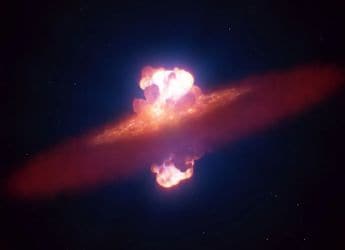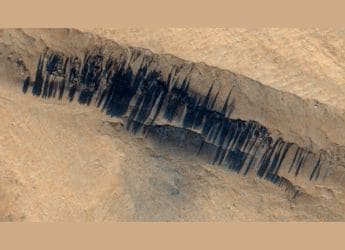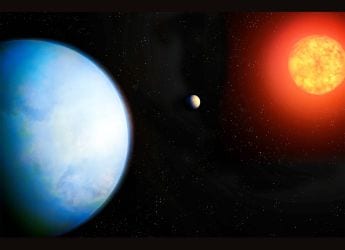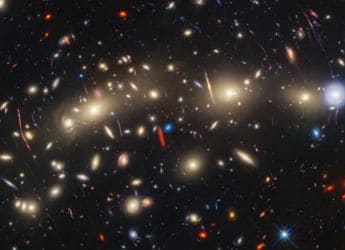- Home
- Social networking
- Social networking News
- Astronaut Reid Wiseman Takes to Twitter to Share Life in Space
Astronaut Reid Wiseman Takes to Twitter to Share Life in Space

"Laughed so hard, I cried yesterday during dinner. Tears don't run down your cheeks in space," wrote Wiseman, who is sharing his observations and pictures with a growing following on Twitter.
"Still adjusting to zero g. Just flipped a bag upside down to dump out its contents. #doesntworkhere," Wiseman tweeted last week.
His favorite picture so far is a view of the northern Australian coast. "The way the clouds and the red desert met the ocean, it's burned in my mind," Wiseman said during an inflight interview with CBS News broadcast on Monday.
"This will go in my living room," he tweeted along with the picture.
This will go in my living room. Australia's north shore. pic.twitter.com/cRIpNMUBQz
-- Reid Wiseman (@astro_reid) June 9, 2014Wiseman is one of six men living aboard the station, a $100 billion research laboratory that flies about 260 miles (418 km) above Earth.
So far, the rookie astronaut has about 74,000 Twitter followers. More than 40 current astronauts from the United States, Europe, Japan, Russia and Canada use the social media service, sharing perspectives 140 characters at a time.
Tweeting astronauts include two-time shuttle veteran and Hubble Space Telescope repairman Mike Massimino, who has 1.3 million followers, and former station commander Chris Hadfield of Canada, with nearly 1.1 million followers.
Wiseman has the distinction of posting the first looping Vine video from space. The time-lapse clip shows the sun circling over Earth, never setting.
"The view out the window is way beyond whatever I dreamed it would be," Wiseman said in the CBS interview.
© Thomson Reuters 2014
Get your daily dose of tech news, reviews, and insights, in under 80 characters on Gadgets 360 Turbo. Connect with fellow tech lovers on our Forum. Follow us on X, Facebook, WhatsApp, Threads and Google News for instant updates. Catch all the action on our YouTube channel.
Related Stories
- Samsung Galaxy Unpacked 2025
- ChatGPT
- Redmi Note 14 Pro+
- iPhone 16
- Apple Vision Pro
- Oneplus 12
- OnePlus Nord CE 3 Lite 5G
- iPhone 13
- Xiaomi 14 Pro
- Oppo Find N3
- Tecno Spark Go (2023)
- Realme V30
- Best Phones Under 25000
- Samsung Galaxy S24 Series
- Cryptocurrency
- iQoo 12
- Samsung Galaxy S24 Ultra
- Giottus
- Samsung Galaxy Z Flip 5
- Apple 'Scary Fast'
- Housefull 5
- GoPro Hero 12 Black Review
- Invincible Season 2
- JioGlass
- HD Ready TV
- Laptop Under 50000
- Smartwatch Under 10000
- Latest Mobile Phones
- Compare Phones
- Vivo Y500 Pro
- Realme GT 8 Pro Aston Martin F1 Limited Edition
- Huawei Mate 70 Air
- Moto G57
- Moto G57 Power
- Motorola Edge 70
- Moto G Play (2026)
- Moto G (2026)
- MacBook Pro 14-inch (M5, 2025)
- Asus Vivobook S16 (S3607QA)
- iQOO Pad 5e
- OPPO Pad 5
- Noise Diva 2
- Noise Halo 2
- Acerpure Nitro Z Series 100-inch QLED TV
- Samsung 43 Inch LED Ultra HD (4K) Smart TV (UA43UE81AFULXL)
- Asus ROG Ally
- Nintendo Switch Lite
- Haier 1.6 Ton 5 Star Inverter Split AC (HSU19G-MZAID5BN-INV)
- Haier 1.6 Ton 5 Star Inverter Split AC (HSU19G-MZAIM5BN-INV)

















